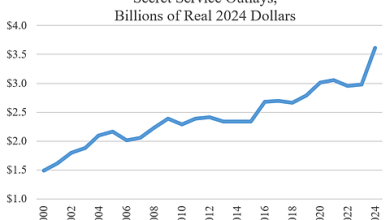Five Reasons Why Social Security Is an Income Transfer Program, Not an “Earned Benefit”

It’s tempting to believe that Social Security is an “earned benefit”—after all, that’s a prevalent idea we’ve been sold for decades, and it feels good to think of it as “our money.” But the reality is more complex. It’s important to look under the hood of the Social Security system to see what’s really going on.
I was in Columbus, Ohio last week, playing the role of party pooper at Social Security’s 89th birthday bash, hosted by the AARP. Our backdrop was a big bold sign with the message: “Social Security. It’s your money. You’ve earned it.” Per show of hand, more than 9 out of 10 attendees were receiving Social Security. You can imagine the disapproving looks in the room when I explained how Social Security actually works. Here are five reasons why Social Security is an income transfer program, and not an “earned benefit.”
1. It’s pay-as-you-go. Social Security is a so-called pay-as-you-go system. This means it is a tax-and-transfer system in which taxes collected from today’s workers fund benefits for today’s beneficiaries. Beneficiaries include eligible workers who are 62 and older, spouses, and their surviving children. There’s no saving or investing that takes place. Payroll taxes collected today are spent immediately.
2. Repaying the “trust fund” adds to the debt. The so-called “trust fund” is an accounting ledger that doesn’t hold real assets. It records IOUs issued by the Treasury Department for Social Security. When the government collected more in payroll taxes than was needed to fund benefits, Congress spent those payroll tax surpluses as soon as the Treasury had collected them. Instead of making it possible to fund benefits when payroll taxes fall short in any given year, these IOUs allow Social Security to call on the Treasury to provide it with additional money, which the Treasury usually does by selling additional public debt. Social Security is in effect borrowing the money it needs to cover the cost of benefits in excess of available payroll tax revenues.
The good news is that Social Security is limited in its borrowing authority to the amount of payroll taxes previously collected plus interest. This means there is some accountability there and a legal mechanism to force corrective action when the so-called ‘trust fund’ becomes depleted. The bad news is that Congress can change the law at any time and decide to let Social Security keep borrowing money, even after its ‘trust fund’ ledger goes negative. In essence, one way that Congress can avoid automatic benefit cuts in 2033, when all past payroll tax surpluses plus their interest will have been repaid by the Treasury in the form of new public debt, is to just keep piling on more debt. That would be a fiscally reckless policy choice we should avoid.
3. Beneficiaries have no property rights to their benefits. Most people know by now that there’s no personal retirement account held by Social Security with their name on it. What many people don’t know is that even the Supreme Court has ruled that individuals do not have a property right to their Social Security contributions. Congress may change how the program works, including who receives how much in benefits, at any time. This undermines the idea that Social Security benefits are something individuals earn or own.
4. Benefits are based on policies made by Congress, not contributions. There is no direct, proportional relationship between what a worker contributes in payroll taxes and what that worker will receive in benefits. Social Security benefits are calculated using a progressive formula—lower-income workers receive higher benefits compared to their pre-retirement wages than do higher-income earners. Additionally, other factors, such as changes in life expectancy, and spousal and survivor benefits, further decouple contributions from benefits. Congress can decide how much to pay out in benefits and to whom, regardless of any contributions made.
The marketing that Social Security was an “earned benefit” was crucial for its political success, especially during expansions like the one in 1950, when Congress expanded eligibility criteria and added several new groups to Social Security’s rolls who wouldn’t qualify based on their own earnings records. This framing helped to distinguish Social Security from other welfare programs, thereby reducing opposition and increasing public support for benefit expansions that were not directly related to a worker’s earnings history. The earned benefit narrative was politically expedient because it resonated with the values of self-reliance and fairness that were central to the American political culture of the time.
5. It works like a Ponzi scheme. The notion of Social Security as an earned benefit obscures the significant intergenerational transfer inherent in the system. The first few generations of retirees received far more in benefits than they contributed, funded by the taxes of a larger, younger workforce. Like a Ponzi scheme, Social Security relies on revenues from new workers to pay for promises made to previous generations. Unlike Ponzi’s scheme, which collapsed when people learned of its true nature, Social Security can use the force of the government to continue this scheme by taxing younger workers more.
Toward a More Rational Conversation
The financing, progressive benefit formula, intergenerational transfers, Supreme Court decisions, and history of political framing all challenge the idea that Social Security is something you’ve truly “earned.” It’s important to look beyond the comforting rhetoric and understand the real dynamics at play.
With younger workers increasingly on the hook for rising benefit costs, effective policy reforms must build on the understanding that Social Security is an income transfer program, not an “earned benefit.” Once we come to grips with that reality, we can have a more rational conversation about who should receive how much in benefits, considering their circumstances, without losing sight of how much is fair to ask younger workers to pay to fund those benefits.





